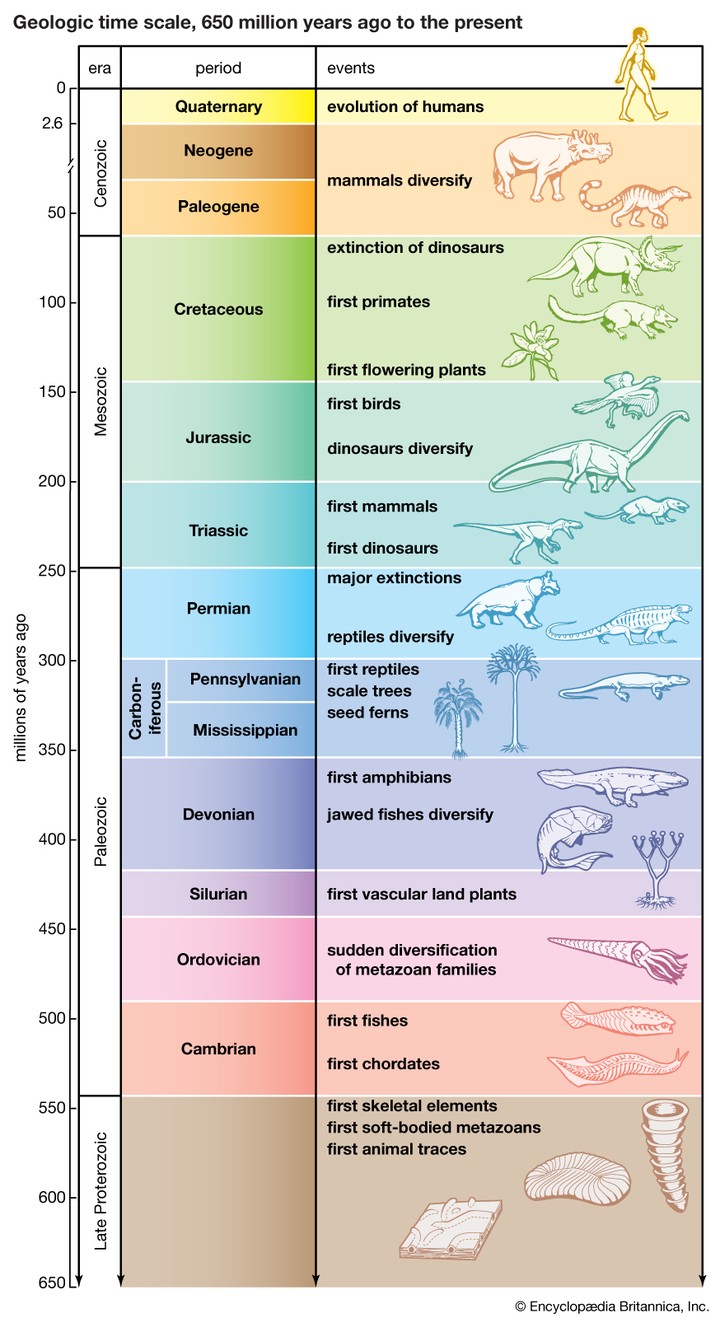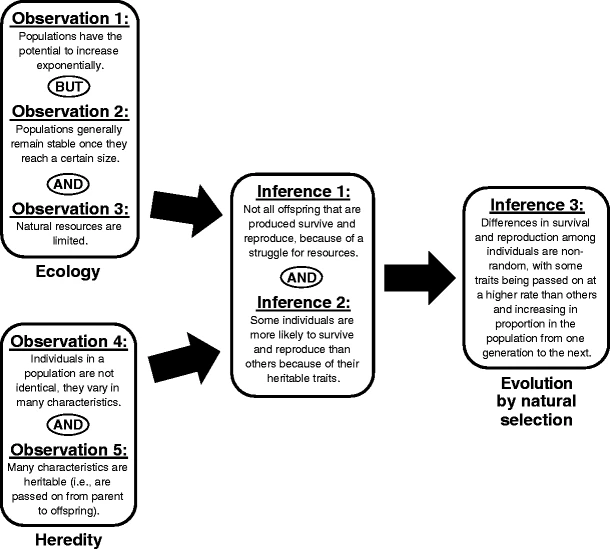Mutation and natural selection drives population evolution

When we want to know the origin of the life on earth, we have to trace back to 650 million years ago. The first life on earth is a single-celled creature. But a human body consists of around 30 trillion cells with more than 200 distinct types! Even though the first life on earth could be a coincidence under right circumstances, the advanced species with complex vital movements couldn’t be. In above diagram, the process of species development can be roughly called as evolution. The definition of evolution in biology is the change in the characteristics of a species over several generations and relies on the process of natural selection.
Let’s discuss further outside this course. What is the internal logic of theory of evolution (conceived by Charles Darwin in mid-19 century)? The general observation in ecology is that the resource in nature is limited and the species always tend to expansion, which lead to “Survival of the fittest”.
To guarantee the fittest can be coherent between generations, new characteristic should be generated and the good characteristic among them will be pick out by natural selection and inherited from last generation. The most common method in nature to generate new characteristic (trait) is gene mutation, which involve a large portion of content in this course.

